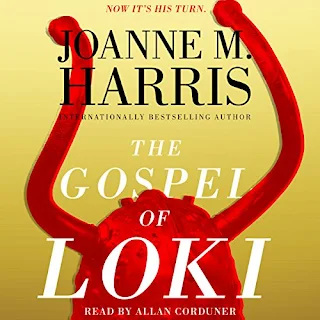Charleston’s Daughter by Sabra Waldfogel is a tale of two cousins in the Lowcountry of South Carolina in the years shortly before the Civil War. Caro is the quadroon daughter of a slave kept as a wife by a loving plantation owner; Caro grows up being served by the other slaves, wearing fine clothes and being educated—but all is not well, as she lacks the society she craves.
Spoiler Alert!
When Caro’s father dies suddenly of yellow fever, Caro’s situation changes dramatically. The Jarvies are embarrassed and insulted even by the existence of Caro and her mother—all except for Emily Jarvie, who is horrified at her cousin’s ill-treatment and wants to help her.
Waldfogel provides best-case scenarios again and again—which she shows to still be intrinsically terrible. So though a slaveowner might truly fall in love with a slave, and vice versa, laws made it very difficult if not impossible for slaveowners to free their slaves, eventually ruining the future for themselves and/or their offspring. The institution of slavery could not be entirely overcome by individual households. Caro’s father really did love his ‘wife’ and daughter and tried to make provisions for them in his will, which his brother then chose to ignore/misinterpret, putting her and her mother on an almost-abandoned property where they are destitute but live with a freedom I can’t imagine many slaves possessed. It was still terrible. And then, when Caro is finally going to be forced to be a house servant—a fate infinitely better than being a field hand—you are with her in wanting her to escape that horrible fate of bowing and scraping to people who have no respect for her, who bully her into ‘behaving’. I really do appreciate Waldfogel giving this almost fairytale situation for Caro (in comparison to the very real and much worse situations for many slaves), and yet still showing how awful it was, nevertheless. What’s lovely about this is that it cuts out the conceivably-valid arguments against worst-case scenarios of ‘it wasn’t that bad for most of them’ or ‘but they were considered family’ or some such.
Now for my issues with the novel! My biggest gripe may not be the author’s fault at all. The narrator read so many lines of several of the female characters in the most whiny, ugly, accusatory tones imaginable. Tones are important. It was difficult to overcome my immediate dislike of some of the characters, including Caro, due to those grating tones.
Perhaps it was a lack of nuance on the narrator’s part. She must have read the book and decided that Caro’s ‘sass’ and resentments must have been expressed in every syllable that came out of her mouth, in the worst way. She was right, though, that Caro did have a ton of resentment, some of it misplaced, I believe. That might be an arguing point, but it irked me how rude Caro was on and on to Emily, her cousin, who was trying to be as nice and helpful as she could be; I suppose some of that may have been worsened by the tone the narrator used for Caro’s voice (if some of it were said more reluctantly or matter-of-factly, I may not have reacted so much). Emily just took it, which was very high-minded of her, but made me even more annoyed for her. Not just that, but Caro was jeopardizing her own slim chances of having a better life by repeatedly trying to alienate Emily with her rude behavior (which it absolutely was in the audiobook, at least). I’m not sure how many Emilys would have kept taking that sort of continual rebuff. Not sure why she even kept trying—except that she was right that Caro and her mother were being treated dismally.
Another issue I had with the story is that Caro often showed poor judgment in other ways as well. But then, she was young, and maybe it was entirely realistic. Often she made good choices. I suppose I’m a little more used to my protagonists being savvier. What bothered me, particularly, is that her poor choices never seemed to sink her—though really, I suppose that is closer to reality than one might think. How often do we get every element right, all the time?
My last gripe is that Waldfogel presents Caro, who has ‘ivory’ skin, as being treated just like all the other slaves when her fancy clothes are taken away—by the public, that is. Seems to me that Waldfogel was a little out of touch with the differences this would have created for her in society, being a beautiful young quadroon as she was.
I suspect I would have enjoyed the print version of this novel much more than the audiobook, as those obnoxious tones grated and colored my perceptions of the characters (and the author) unfairly, perhaps. Even if the author did mean for there to be subtle inflections that way, it doesn’t mean she meant for them to be ruint with exaggerated whininess in the tone of voice, which makes us far less sympathetic to the characters. A character can say something with a tone of mild-but-pleasant exasperation and not... well, you get my drift. Skip the audiobook unless it’s the only way you consume novels, but if you do listen to it, try to take those strident tones in stride.








